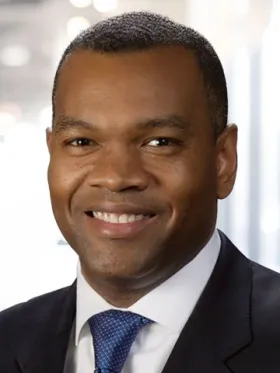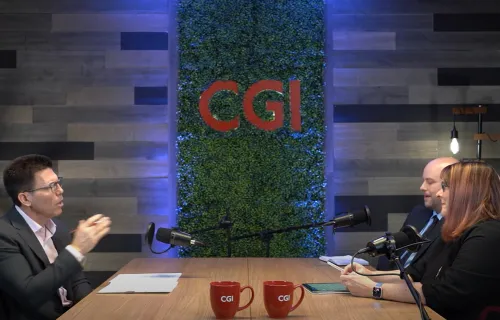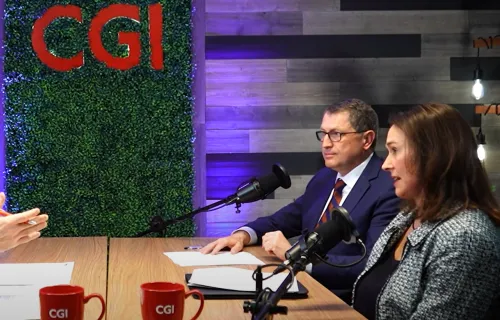While touring NASA’s Johnson Space Center, President John F. Kennedy encountered an employee in the hallway and asked him what he did for NASA. The man, who turned about to be a janitor, replied proudly, “Mr. President, I’m here to put a man on the moon.”
Hard to think of a better example of an entire organization perfectly aligned with the mission. As a former federal agency IT leader, I have consistently found that full organizational awareness to be the most reliable predictor of program success: every employee aligned with the objective, starting in the C-suite and extending out across the entire organization.
However, achieving that degree of alignment is not easy, and today’s federal CIOs are likely to encounter several challenges.
Vulnerability of mission enablers
Creating full alignment is a lesser challenge for employees who actually execute the mission—think nurses in the Department of Veterans Affairs healthcare system, scientists at the Food and Drug Administration or engineers in the Army Corps of Engineers. IT employees, by contrast, are enablers of the mission. Their roles, no matter how important, are, in many respects, divorced from the day-to-day mission execution.
If you were to ask your IT employees what they do, would they, like the janitor, respond in terms of how their work helps their colleagues achieve the mission? If they do not make that connection, the result will be evident in their work. It is important for them to understand how their work advances the agency’s mission; otherwise, they may simply concentrate on the task at hand.
Mistaking IT for the mission
While you’re asking your employees about their jobs, ask yourself about your own understanding. Do you find yourself mentally defining your agency’s strategy in terms of your IT development initiatives and programs, rather than how these efforts will enhance or support the mission?
That’s a frequent pitfall for CIOs in today’s world, where they manage massive budgets and exciting technologies that literally transform their agencies’ capabilities, and where the possibilities of the future are routinely articulated in technology terms. There’s no doubt that electronic health record initiatives are transfiguring the VA, that drone warfare technology has forever altered Department of Defense combat strategies or that cloud adoption improves IRS cybersecurity. However, those technology improvements are stepping stones that facilitate the work of the agencies. Those waves of technology and innovation are significant and unending, but they are not the mission. The missions remain focused, respectively, on veterans’ health, national security and warfare and tax collection.
Accommodating political shifts
Another challenge for every federal agency CIO is their vulnerability to political swings. When the administration shifts from one party to another, agencies can expect a shift in mission—sometimes minor, but potentially a radical reversal of objectives.
Political appointees occasionally arrive in senior agency positions bent on different objectives than those of their senior career colleagues. Many large agencies are seeing an increased proliferation of special assistants and special advisors, often appointed by the executive branch into non-statutory functions within the agency, but reporting elsewhere.
Nothing squelches productivity and demotivates employees like uncertainty about goals and objectives. While senior management seeks to integrate the change, employees will sometimes feel it wiser to stall than risk making mistakes in an unsettled environment. They will often continue along yesterday’s path while they wait for clarity on their new priorities.
Meeting the challenges
Clearly, meeting these challenges requires a deft CIO, adaptable to change and finely attuned to the needs of the entire agency, every employee and the citizens they serve.
- A successful CIO is a listener. Having the proverbial “seat at the table” in the C-suite is your opportunity to help shape the mission and keep others informed about IT strategies and initiatives. However, you are there mainly to learn how you and your team can better enable the mission. You are there to make things work better for everyone. Guard against the urge to conceive a technology solution to every problem. Oftentimes, you simply need better alignment of IT activities to the mission, or better communication between your teams and those carrying out the mission.
- An effective CIO is a strategist in the most comprehensive meaning of the word: conceiving a strategy, developing it in concert with those affected by it and those who will carry it out, setting priorities in accord and demanding that every IT activity conform to it.
- The best CIOs are also skilled and avid communicators—even evangelists—of the strategy, and they demand the same of their team leaders. This ensures employees are abundantly clear on the strategy and equally clear on how their role advances it. Everybody needs to be like that NASA janitor, understanding the part their individual work plays in fulfilling the mission. Nor is it a one-and-done activity - Once the employees have attained that alignment, leaders will need to provide constant attention, consistent messaging and creative communication methods to maintain it and maximize buy-in and adoption by all stakeholders.
At CGI, we embody these qualities of the effective CIO in our own approach to assist them. We listen long and hard to our clients, rather than arriving with preconceived notions of their needs, our deep experience notwithstanding. We have a deep, firm orientation to our clients, to the point that we measure ourselves by their satisfaction. We take their feedback seriously and make sure it guides our future course.
For more on the CIO's role in engendering an innovative and productive environment, read "CIOs/CTOs: Build a firm foundation as the prelude to future innovation."





